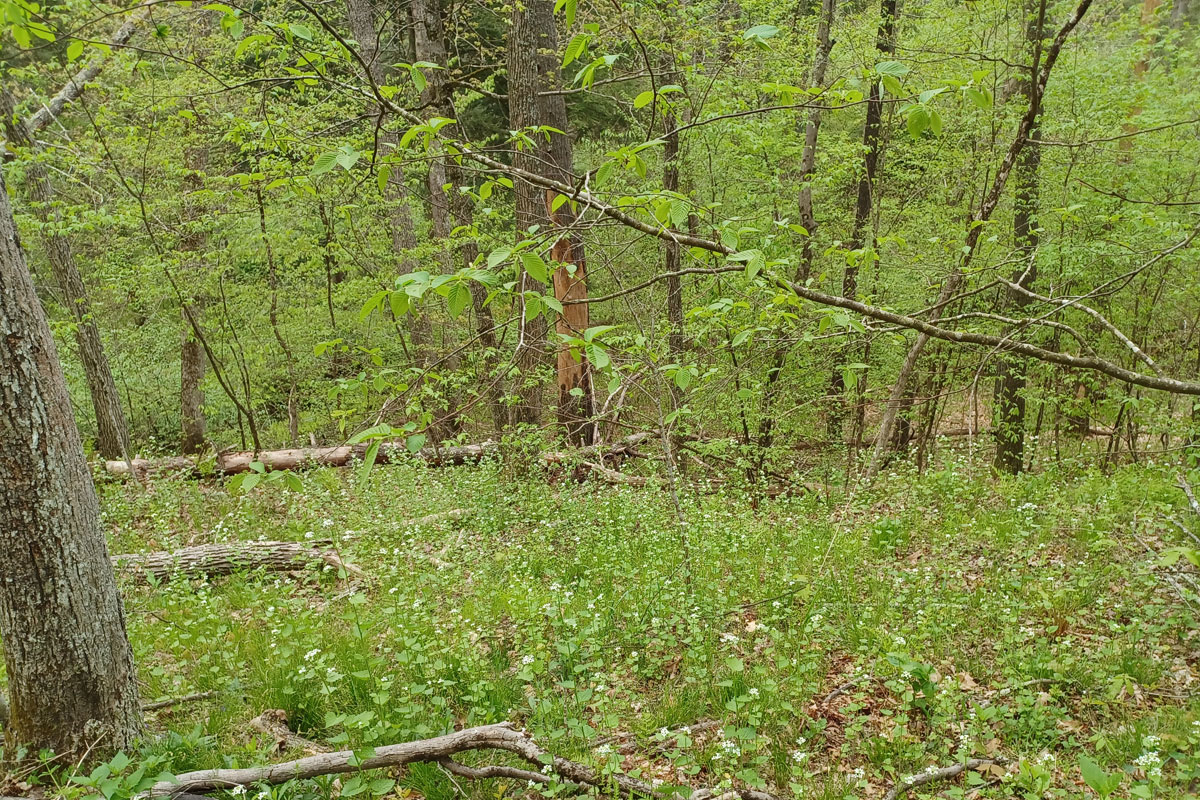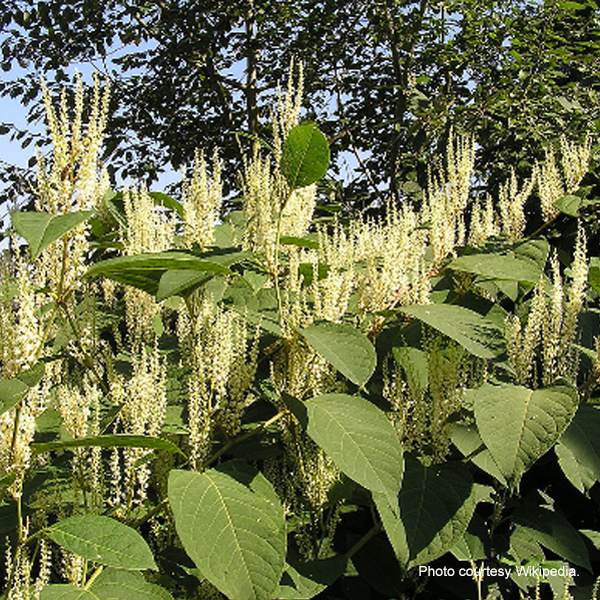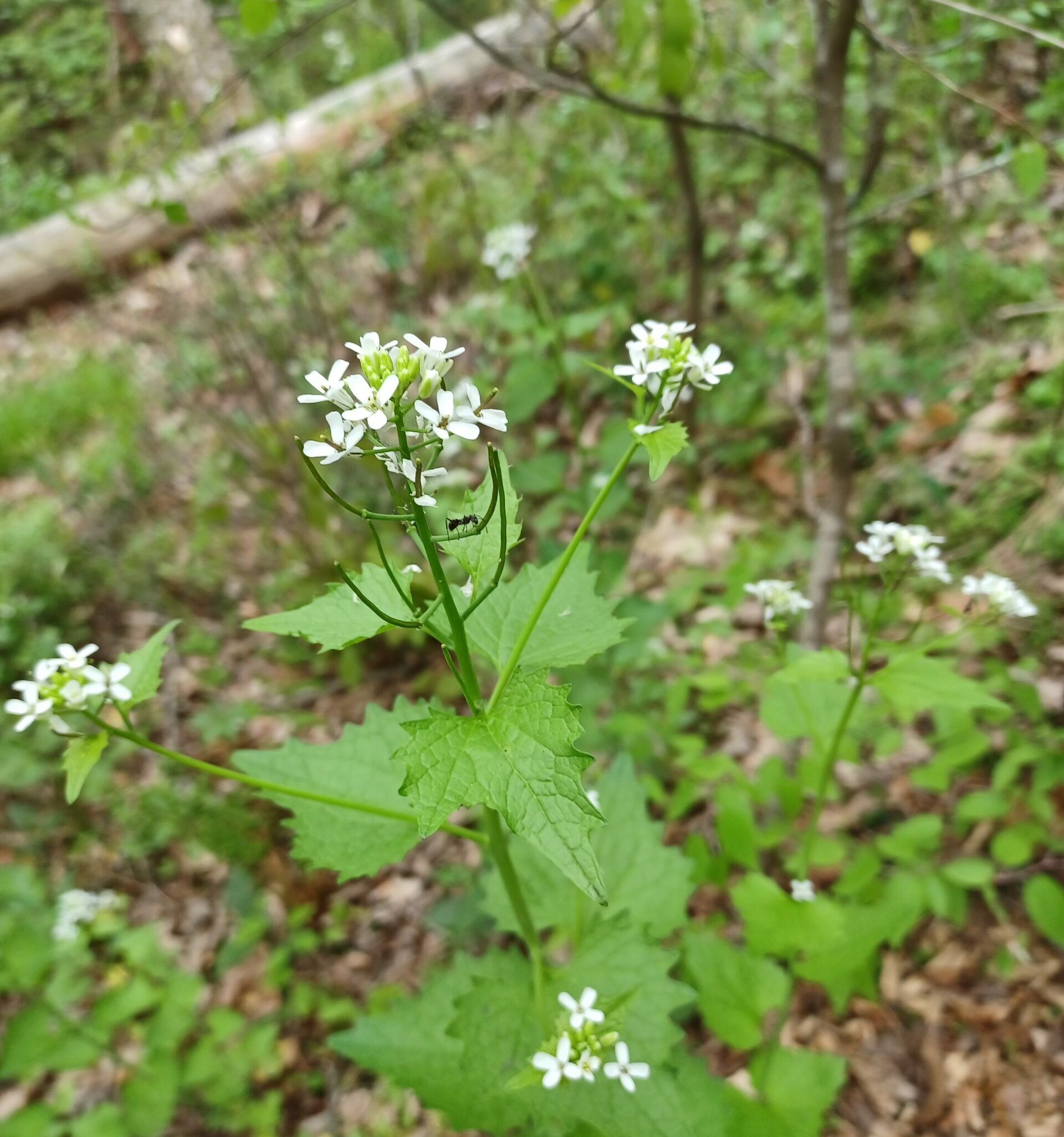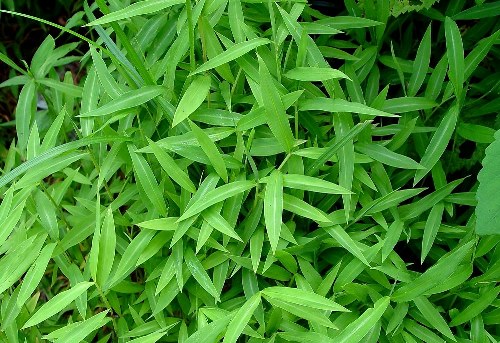News

Invasive Plants in Pennsylvania
Invasive non-native plants are a hot topic as of late. According to the PA Department of Conservation and Natural Resources (DCNR), about 37% of the roughly 3,400 species of plants in PA are non-native to the state. Many cultivated plants arrived here deliberately or accidentally by the earliest European settlers or by hitching a ride through the ballast water of ships, airplane cargo holds, packing material, or people’s shoes.
Most introduced or non-native plants are well-behaved and remain in cultivated fields or garden; according to the US Environmental Protection Agency (EPA), only about 1% of non-native species released into a new ecosystem become invasive there (and only about 10% survive at all). Still, those that spread unchecked can have severe negative impacts. The EPA defines an invasive species as “a species whose presence in the environment causes economic or environmental harm or harm to human health.” A population of an invasive species is often able to grow unchecked due, at least in part, to a lack of natural predators. For example, white-tailed deer evolved in eastern North America along with native flora, which they recognize as suitable food. These large herbivores do not eat most non-native plants if native vegetation is available. Areas that are heavily browsed by the overabundant deer population give space for non-native species to flourish at the expense of the native species. The domino effect continues through the entire ecosystem impacting native flora and fauna alike. The same scenario occurs in waterways and wetlands; native aquatic plants, fish, and invertebrates are replaced by non-native species that impact these ecosystems. The following are a few of these non-native plants that are changing our ecosystems and are found in Pike County.
Japanese Knotweed (Fallopia japonica) & Giant Knotweed (Fallopia sachalinensis)

Japanese Knotweed
Both species of knotweed were introduced into North America for ornamental use and forage and erosion control in the late 1800s. Originally from Japan, both species are now found throughout the United States. These plants can be found in a variety of locations with varying amounts of sun, moisture (banks of waterways and wetlands), and human disturbance. They are herbaceous perennials with hollow, erect stems that are light green, smooth, jointed, and swollen at the nodes, hence the reference to bamboo. Japanese Knotweed leaves are squared off at the base , whereas Giant knotweed leaves are heart-shapes. They are known to hybridize, so ID can be challenging. New shoots can grow 3-4 inches per day, maturing to 3’ to 12’ tall. Both species have greenish-white flowers and produce a shiny brown seed enclosed in a papery covering. Seed viability is low. Knotweeds spread primarily by their fleshy roots, which are known as rhizomes. These rhizomes can be dispersed by flooding and erosion as well as man-made soil disturbances. A small piece of rhizome or seed can be carried on machinery, tools, or shoes and can root in soil or water where dropped. Knotweeds can form dense colonies that will crowd out native vegetation, clog small waterways, and increase bank erosion, lowering the quality of riparian habitat for fish and wildlife. Once established, these stands are very difficult to eradicate. On the bright side, knotweed young shoots have been used to make desserts such as cobblers and crisps.

Japanese Barberry
Barberry (Berberis thunbergia)
Japanese barberry was introduced into the US in 1875 as an ornamental shrub. Like many invasive species, it escaped into the wild where it could dominate deep in the woods and form impenetrable thickets along forest edges.
Berberis thunbergia has small, oval, alternate leaves with single spines along the stem. Barberry is a very dense shrub with small, yellow flowers produced in the spring. Red drupes (fruit) develop and persist through the winter; birds and other animals eat the fruit and deposit seeds as they move.
Barberry can be difficult to remove. Young plants can be taken out by hand, and larger shrubs can be dug out or removed using a tool called a weed wrench. In late summer, you can also cut all the branches and apply an herbicide listed for woody plants to the cut stumps. Both methods may need to be repeated several times. Read and follow all label directions for mixing and application. Barberry has been found to provide good habitat for ticks due to its dense growth that provides higher humidity levels in the surrounding area. As of 2021, Berberis thunbergia can no longer be sold in PA, as it was added to the Noxious Weed List by the PA Department of Agriculture Controlled Plant and Noxious Weed Committee. However, nurseries are allowed to sell existing stock till gone.
Garlic mustard (Alliaria petiolate)

Garlic Mustard
Garlic mustard is a biennial plant in the mustard family. Native to Europe, Asia, and Africa, it was brought to the US with early colonists as a medicinal plant and garlic substitute. Kidney to heart-shaped leaves with rounded teeth on the edge form a basal rosette the first year and have a garlic odor when crushed. Early in spring of its second year, four petaled white flowers form on branched stems. By summer, the seed pods form, and when ripe, the highly mobile seeds are so light they can be carried by the wind, travel in water or in soil movement. The seeds remain viable for over 5 years in good conditions. Hand-pulling is very effective as the plant does not reproduce by root pieces left behind. Covering the bare earth with a native groundcover will prevent or greatly reduce seeds from sprouting.
Japanese Stiltgrass (Microstegium vimineum)
Japanese stiltgrass is a native of Asia that came here in 1919 as packing material for imported porcelain. This widespread annual grass is an invader of woodlands and a prolific seeder that is often found growing along trails and roads, quickly spreading into the forest understory. The tiny seeds are spread on hikers’ shoes, vehicles, and logging and road maintenance equipment.

Japanese Stiltgrass
Japanese stiltgrass is 1-3 feet tall with stems forming a tangled mat. Leaves are elongated and lance-shaped , with each blade 1-3 inches long. A silvery, slightly off-center stripe runs the length of each leaf. A 1-2 inch long, three-branched flower spike emerges in late summer with seed dispersal following when mature. Japanese stiltgrass spreads exclusively by seed. Each plant can produce up to 1,000 seeds annually and remain viable for up to 5 years germinating when conditions are favorable. Japanese stiltgrass can grow in most habitats including shade.
Small infestations can be easily pulled as their root system is very shallow. Cutting it later, before seed set (August) with a string trimmer at ground level will prevent it from regrowing; do not use a mower as it can regrow from even the lowest setting on a mower. Preemergence herbicides are effective for larger infestations; check the product label for listing and directions for use.
Non-native plants and insects are wreaking havoc on our natural ecosystems and becoming more problematic as our climate changes. These changes to our landscapes can impact the food, shelter, and areas native wildlife need to raise their young, causing further disruption. Learning how to identify non-native plants in the landscape and removing them will go a long way to helping to prevent or lessen their spread into our forests and natural areas.
Marianna Quartararo
Resource Conservationist
